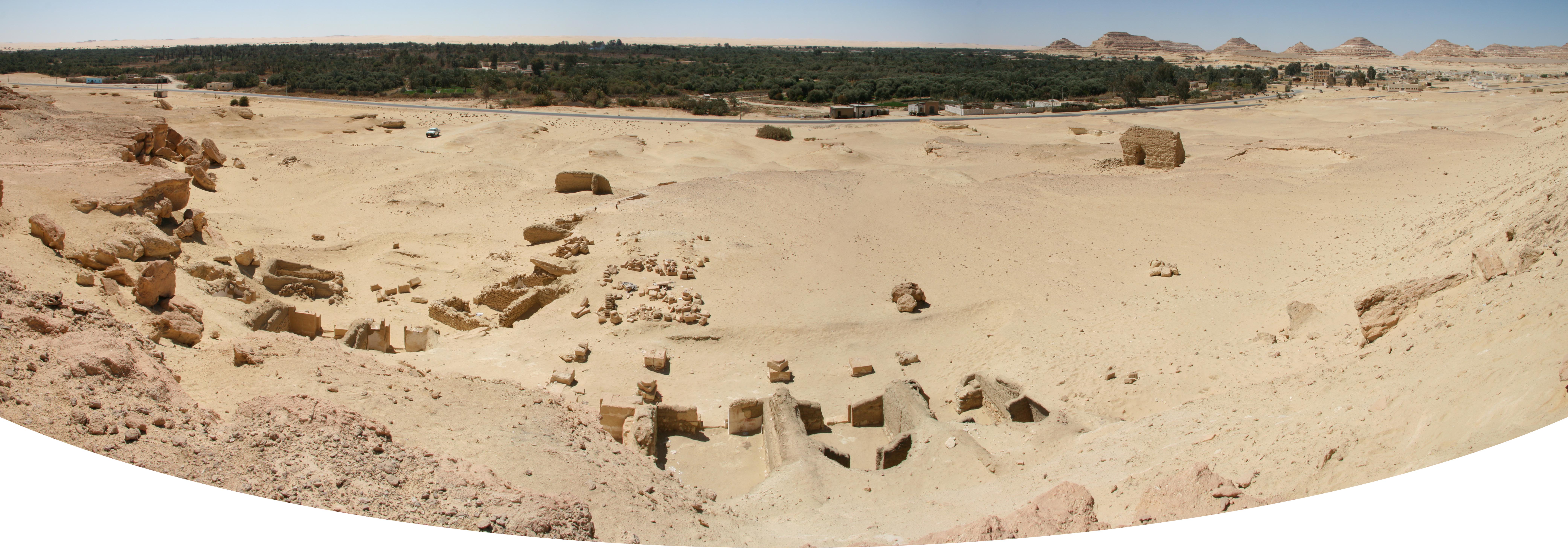Project
DEChriM (“Deconstructing Early Christian Metanarratives: Fourth-Century Egyptian Christianity in the Light of Material Evidence”) is a six-year project supported by an ERC Consolidator Grant, and running from 2019 to 2025. Based at the MF Norwegian School of Theology, Religion and Society, in Oslo, the project brings together specialists in archaeology, papyrology and epigraphy (Greek, Coptic and Syriac), ceramic studies, digital humanities, 3D architectural reconstructions, topography and photogrammetry, and is led by Prof. Victor Ghica.
A massive corpus of unedited archaeological sources collected over the last two decades from the deserts of Egypt, by far the richest available for the fourth century, sheds a radically new light on Christianity in Egypt. Building on this new dataset, DEChriM reassesses phenomena and developments that are defining for Egypt’s Christianisation, such as the chronology and dynamics of the evangelisation, the role played in this process by imperial legislation and institutions, the balance between rural and urban Christian communities, the social and cultural profile of the conveyors of Christianity, strategies for negotiating Christian identity, etc. Grounded in the archaeological record, DEChriM addresses also key issues relating to material culture through, among others, producing a catalogue of fourth-century Christian archaeological material, both monumental and artefactual (published online in the 4CARE database), providing absolute dates and occupation sequences for the most significant monuments, systematising chrono-typologically fourth-century Christian architecture or producing a long overdue catalogue of the ceramic production of the fourth century in Egypt. As suggested already by the pre-treatment of the corpus, the picture of fourth-century Egyptian Christianity emerging from this mass of data shifts the paradigm with which operates the historiography of late antique Egypt. Whilst deconstructing the prevailing metanarratives on fourth-century Christian Egypt, the project aims for hypercontextualised regional micro-narratives valid for some regions of Egypt, but potentially relevant for or extrapolable to other provinces of the Late Roman Empire. An inter- and trans-disciplinary collective endeavour calling upon a variety of disciplines, methods and techniques, DEChriM constitutes the first in-depth regional study in fourth-century Christian archaeology.
The inner architecture of the project is articulated in 10 work packages oriented towards collecting the material remains, both movables and immovables, associated with fourth-century Christianity in Egypt and studying them along a variety of lines of research and from various perspectives. The production of the catalogue/database at the core of the project relies on a variety of data collection operations on the field, in Egypt, and in public or private collections around the world.
Background
DEChriM grew out of the outcomes of three multiannual projects coordinated by Victor Ghica at the Institut français dʼarchéologie orientale in Cairo. From 2000 onwards, wide-ranging fieldwork in the Western and Eastern Deserts of Egypt allowed for gathering a massive dataset documenting the emergence and evolution of Christianity in these remote areas. The fourth-century material collected during those two decades is at the core of DEChriM. Since 2019, the DEChriM team expanded those initial corpora and will keep on enriching them. It is on this archaeological record that the projects builds its reexamination of the Christian world of fourth-century Egypt.
Collaborations
Through its host institution, MF Norwegian School of Theology, Religion and Society, DEChriM signed in 2020 a collaboration agreement with the Institut français dʼarchéologie orientale (IFAO), the scope of which goes from fieldwork to archives or digitalisation of archaeological data. One of the results of this cooperation is the incorporation into DEChriM of the South Kharga Oasis Survey (SKOS) database and the publication of SKOSʼ results in the form of a three-volume monograph at IFAOʼs press. In addition, IFAO and DEChriM jointly fund the excavation of the laura of Ganub Qasr al-Aguz, and work together on common publication projects. IFAO and DEChriM are also organising the resuming of field operations at Dush as a joint venture led by Victor Ghica.
As the datasets of our projects intersect in more than one area, DEChriM has collaborated also with the team of the ERC-funded PAThs (“Tracking Papyrus and Parchment Paths. An Archaeological Atlas of Coptic Literature. Literary Texts in Their Original Context. Production, Copying, Usage, Dissemination and Storage”) project, led by Prof. Paola Buzi at the La Sapienza University, in Rome.
Our project has been also collaborating with Johan Åhlfeldtʼs DARE (“Digital Atlas of the Roman Empire”). As visible on our respective websites, our projects exchange geodata and cartographic material. The same goes for the Trismegistos platform, with which most of the 4CARE material is interlinked.
On a more general level, DEChriM tries to contribute to the emerging world of Linked Open Data for historical resources. With that aim in view, our 4CARE database provides on each of its pages – of both sites and artefacts – downloadable data in machine-readable format (JavaScript Object Notation – JSON).
Occasionally, DEChriMʼs team benefited as well from the expertise of Prof. Stephen Emmel, Dr Alin Suciu, Dr Alexandros Tsakos, Dr Artur Obłuski, Dr Mariusz Drzewiecki, Prof. Rosario Pintaudi, Assoc. Prof. Francesca Maltomini, Prof. Claudio Gallazzi, Assoc. Prof. Corinna Rossi, Dr Charles Bonnet, Dr Christine Brennan, Dr Adela Oppenheim, Prof. Michael Dee.






